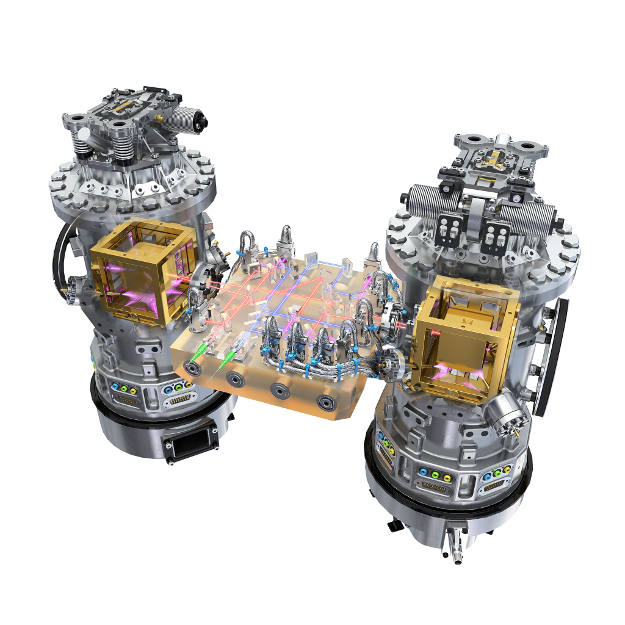Gravitational waves will be mapped to unprecedented high detail when a new gravitational wave detector mission launches in 2037. This will observe black holes, neutron stars and other objects, a new study notes.
The paper looks ahead to when the Laser Interferometer Space Antenna (LISA) from the European Space Agency will fly into space to measure gravitational radiation over a broad band at low frequencies. The mission will follow on from a successful test mission, LISA Pathfinder, that concluded 16 months of work in 2017.
Scientists now expect that LISA may find gravitational waves, or ripples in space-time, by scrutinizing events called extreme mass ratio inspirals. These events occur when a black hole or super-dense neutron star (typically, the remnant of a supernova) spirals into a black hole millions of times the mass of the sun.
Related: Gravitational wave treasure trove shows black holes, neutron stars colliding
It takes tens of thousands of orbits before the object meets its demise within the supermassive black hole, researchers noted. The “inspiralling” creates “long signals” that will allow scientists to seek deviations against industry measurements such as Einstein’s theories of relativity, or the standard model of particle physics that describes fundamental physics processes.
LISA, new models indicate, will be able to probe gravitational interactions along with a quantum phenomenon called scalar fields. These fields describe how every point of the universe has a value or strength measurable with the field, but that the field does not point in any particular direction. A comparable example is a temperature map of the local weather forecast.
Scalar fields have little importance in the modern universe, but some scientists suggest the early universe was rich in these fields, so rich that it is possible that cosmic inflation (the sudden growth of the universe shortly after the Big Bang) is attributable to this phenomenon.
“We have now shown that LISA will offer unprecedented capabilities in detecting scalar fields, and this offers exciting opportunities,” participating study author Thomas Sotiriou, director of the University of Nottingham center of gravity, said in a statement.

Sotiriou suggested LISA’s work could be applicable for studies of inflation, the nature of dark matter, the nature of gravity or the behavior of elementary particles.
A paper based on the research was published Feb. 10 in Nature Astronomy. The work was led by Andrea Maselli of Italy’s Gran Sasso Science Institute.
Follow Elizabeth Howell on Twitter @howellspace. Follow us on Twitter @Spacedotcom and on Facebook.

